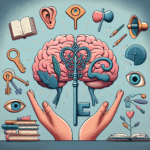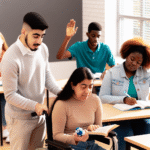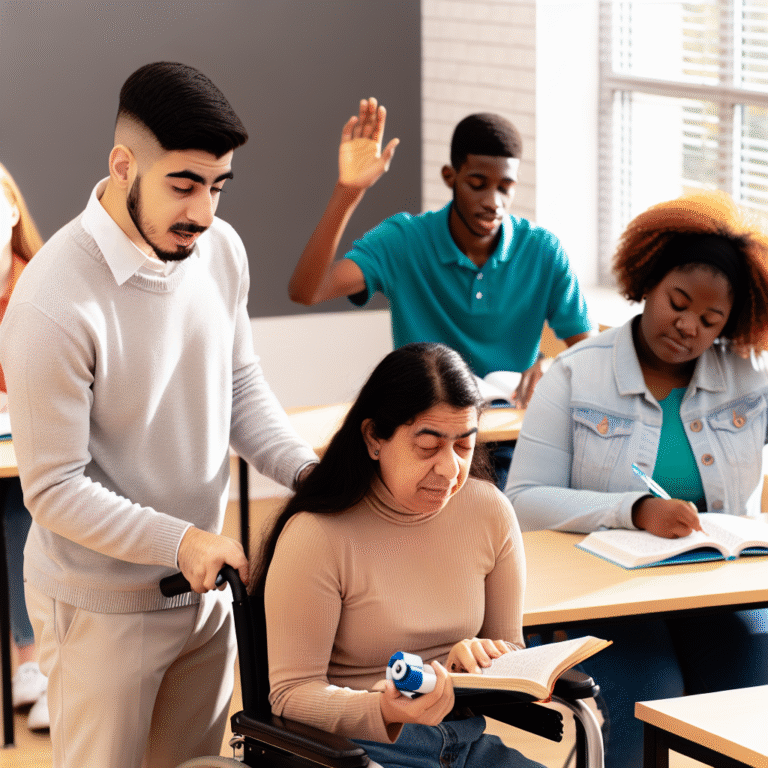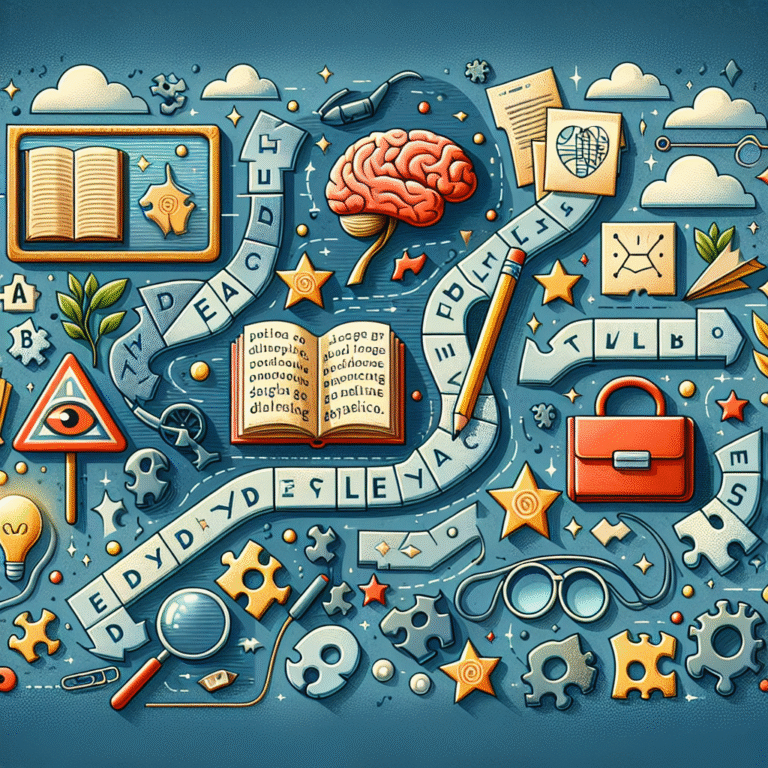Bridging the Gap: Innovative Approaches to Teaching Social Studies to Students with Learning Disabilities
Introduction
Teaching social studies effectively to students with learning disabilities is a challenge many educators face. These students often struggle with retention, comprehension, and engagement—core competencies that are crucial in understanding history, geography, and cultural studies. Bridging the gap means employing innovative strategies that cater to diverse learning styles and promote inclusivity in the classroom. As society increasingly recognizes the importance of equitable education, the call for effective methodologies in teaching social studies to students with learning disabilities has never been more urgent.
In this comprehensive exploration, we will delve into unique approaches and proven techniques designed to engage students with learning disabilities in the realm of social studies. By implementing these strategies, educators can foster an inclusive learning environment and equip students with the skills they need to understand and appreciate the world around them.
Understanding Learning Disabilities in the Social Studies Context
Defining Learning Disabilities
Learning disabilities encompass a range of disorders that affect the brain’s ability to receive, process, and express information. Common types include dyslexia, dysgraphia, and attention deficit hyperactivity disorder (ADHD). Each of these disabilities presents distinct challenges, particularly in reading comprehension, written expression, and focus—all crucial skills in social studies education.
The Importance of Social Studies
Social studies play a vital role in forming a student’s worldview. It encompasses history, geography, political science, and sociology, all of which help students understand their place in the world. For students with learning disabilities, engaging with social studies can enhance their critical thinking skills, promote empathy, and provide a sense of belonging in their community and beyond.
Innovative Approaches to Bridging the Gap
1. Multisensory Learning Techniques
Case Study: The Exploratory Classroom
One compelling example of innovative teaching comes from a middle school in New York that implemented a multisensory learning approach. By integrating visual, auditory, and kinesthetic learning styles, the school created an exploratory classroom environment. Students engaged in hands-on activities, such as role-playing historical figures and participating in interactive map-making.
Analysis
This case study demonstrates how multisensory strategies can deepen engagement. By tapping into various senses, students with learning disabilities can process information more effectively, thereby bridging the gap between understanding and retention.
2. Technology Integration
Example: Digital Storytelling
Increasingly, educators are turning to technology to create rich learning experiences. A notable initiative involved fourth-grade students using digital storytelling platforms to narrate historical events. Students collaborated to create multimedia presentations that combined images, sound, and text.
Analysis
Digital storytelling not only enhances engagement but also allows students to express themselves in diverse ways. This kind of innovative approach acknowledges neurodiversity and respects students’ unique strengths, effectively bridging the gap in social studies education.
3. Collaborative Learning Environments
Case Study: Peer Tutoring Programs
A high school in Chicago launched a peer tutoring program targeting students needing additional support in social studies. By pairing students with their peers, they created a collaborative learning environment that fostered mentorship and social interaction.
Analysis
Peer tutoring helps bridge the gap by facilitating social connections while reinforcing academic content. As students work together, those with learning disabilities benefit from personalized attention, allowing them to grasp complex concepts in a supportive environment.
| Learning Approach | Benefits | Challenges |
|---|---|---|
| Multisensory Learning | Engages different learning styles | Time-consuming to plan and implement |
| Technology Integration | Enhances engagement and creativity | Requires access to technology and training |
| Collaborative Learning | Fosters social connections and support | May need structured formats to succeed |
Creating Inclusive Curriculum
4. Culturally Responsive Teaching
Culturally responsive teaching approaches emphasize the importance of including students’ backgrounds in the curriculum. For instance, educators can incorporate materials that reflect diverse cultures and perspectives, enabling students with learning disabilities to relate to the content on a personal level.
Analysis
This strategy demonstrates that Bridging the Gap: Innovative Approaches to Teaching Social Studies to Students with Learning Disabilities is not solely about altering instructional methods but also about recognizing and validating students’ identities.
5. Graphic Organizers and Visual Aids
Graphic organizers are powerful tools to help students with learning disabilities visualize relationships between concepts. Teachers can create charts or mind maps that outline key events in history or the elements of geography.
Example: The History Timeline
In a project to cover 19th-century American history, a social studies teacher introduced a timeline graphic organizer. This visual aid allowed students to place significant events chronologically and associate them with key terms and figures.
Analysis
Visual aids like timelines can significantly reduce cognitive overload for students with learning disabilities, making complex information more digestible and achievable.
Encouraging Critical Thinking
6. Inquiry-Based Learning
Inquiry-based learning encourages students to ask questions and explore topics deeply. A case study highlighted a classroom engaged in debates over historical events, prompting students to analyze sources and understand differing perspectives.
Analysis
By engaging students in inquiry-based learning, educators promote critical thinking and help students with learning disabilities develop confidence in expressing opinions based on research. It means encouraging them to navigate classroom discussions actively and share their insights.
7. Service-Learning Projects
Integrating service-learning projects into social studies curriculum can have profound impacts. For example, a class studying local history undertook a project to create a community timeline, collaborating with local residents.
Analysis
Service-learning bridges the gap by connecting academic content with real-world applications. It reinforces lessons while promoting social responsibility, making learning more relevant and impactful for students with learning disabilities.
Assessment Strategies Tailored to Diverse Needs
8. Alternative Assessment Methods
When assessing students with learning disabilities, traditional methods may not provide an accurate picture of their knowledge and abilities. Alternative assessments, such as portfolio assessments or project-based evaluations, can provide a more comprehensive view of a student’s learning journey.
Analysis
Using various assessment methods allows educators to demonstrate proficiency in social studies more effectively and fairly, bridging the gap for students who may excel in hands-on tasks but struggle with standardized tests.
9. Feedback and Reflection
Encouraging students to reflect on their learning experiences fosters a sense of ownership and responsibility. Providing prompt, constructive feedback helps students identify areas for improvement and encourages them to develop a growth mindset.
Example: Reflection Journals
A third-grade class implemented reflection journals focused on social studies topics. Students penned their thoughts and insights on each lesson, allowing the teacher to understand their learning processes better and modify instruction accordingly.
Analysis
Reflection not only strengthens metacognitive skills but also helps bridge the gap by promoting self-awareness and personal growth among students with learning disabilities.
Conclusion
In the quest to include all learners, Bridging the Gap: Innovative Approaches to Teaching Social Studies to Students with Learning Disabilities offers thoughtful strategies that champion diversity, innovation, and inclusivity. By adopting multisensory learning techniques, embracing technology, encouraging collaboration, and fostering an inclusive curriculum, we can create engaging social studies experiences for students with learning disabilities.
Educators are invited to draw inspiration from these approaches, integrating them into their classrooms to help every student thrive. The journey to an inclusive educational environment is ongoing, and with the right tools and mindset, we can achieve transformative outcomes that level the playing field for all learners.
FAQs
1. What are the symptoms of learning disabilities in social studies?
Common symptoms may include difficulty understanding written material, trouble with organizing thoughts, and struggles with focusing or retaining information during discussions.
2. How can parents help students with learning disabilities at home?
Parents can support their children by providing structured routines for homework, using engaging resources (videos, games), and encouraging open communication about academic challenges.
3. Are there specific teaching practices effective for all learning disabilities?
While many practices can be beneficial for various disabilities, it’s essential to tailor strategies to each student’s unique strengths and needs.
4. How can teachers assess students with learning disabilities fairly?
Educators should consider using alternative assessments such as portfolios or project-based evaluations to provide a broader picture of a student’s abilities and understanding.
5. What role does technology play in teaching students with learning disabilities?
Technology can provide personalized learning experiences, enhance engagement through interactive content, and facilitate different modes of expression for students.
Through innovative approaches and continuous exploration, we can create educational experiences that truly bridge the gap, ensuring that every student’s voice is heard and valued in the exciting realm of social studies.






